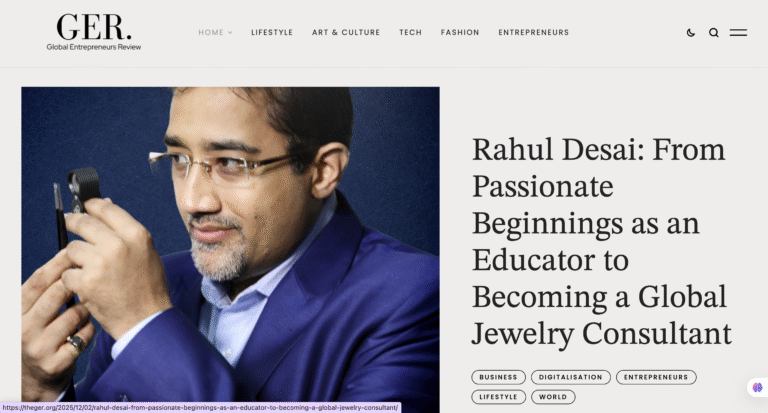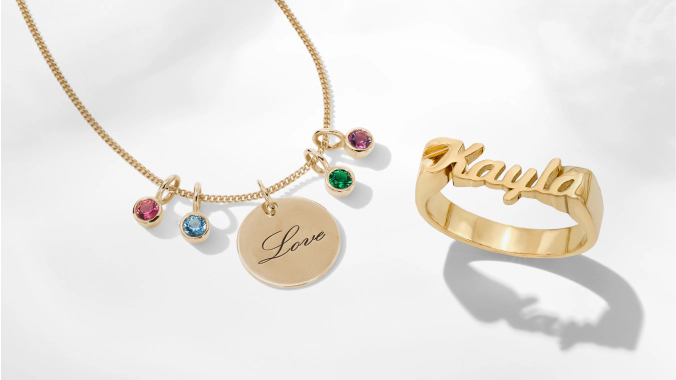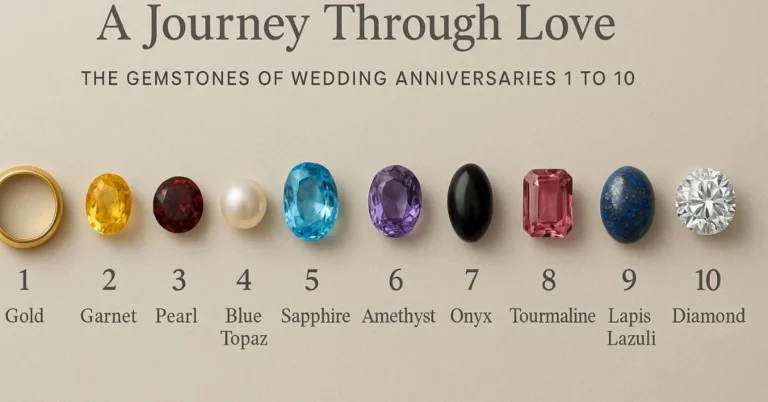Emeralds, with their deep and luminous green, have enchanted humanity for more than four millennia. These striking gemstones are not just admired for their beauty—they are cultural icons, symbols of divine favour, and messengers of emotional depth and inner peace. In 2025, emeralds are witnessing a renewed renaissance, reimagined by designers, embraced by celebrities, and treasured by collectors. As the gemstone of rebirth, wisdom, and wealth, the emerald continues to thrive in both heritage and haute couture.
Whether it’s a vintage engagement ring passed down through generations or a contemporary choker gracing the runway in Paris, emeralds are making an indelible mark across the global jewellery scene.

Emerald’s Timeless History: A Gem Through Civilizations
Emeralds have been adored and worshipped in nearly every ancient civilization. Their story unfolds across continents, from the mystic deserts of Egypt to the sacred mountains of South America and the opulent courts of India.
🔸 The Ancient World: Emeralds as Symbols of Power
- Egypt (c. 1500 BCE): The first known emerald mines were located in Egypt near the Red Sea. These were later dubbed “Cleopatra’s Mines,” after the legendary queen who wore emeralds as a symbol of fertility, power, and eternal youth.
- Ancient Rome: Emeralds were closely associated with Venus, the goddess of love and beauty. Roman emperors, including Nero, are said to have viewed gladiator games through emerald-encrusted lenses, believing the green hue soothed the eyes and sharpened clarity.
- Mesoamerican Civilizations (Inca & Aztec): In what is now Colombia, emeralds were considered more precious than gold. The Inca civilization offered them to sun gods during religious rituals. The Spanish conquistadors marvelled at their splendour and exported them to Europe, forever changing the gemstone trade.
🔹 Middle Ages to Mughal Marvels
- Medieval Europe: Emeralds were believed to foretell the future and protect against evil spells. Knights and royalty wore them into battle, believing they would protect against harm and grant divine favour.
- Mughal Empire (India): Mughal emperors adorned themselves in emeralds inscribed with holy verses. The gem became a staple of royal Indian jewellery, especially in kundan and meenakari work. Mughal emeralds are now some of the most prized antiques in museums and private collections.
Science Behind the Sparkle: What Makes Emeralds Unique?
Emeralds belong to the beryl mineral family, alongside aquamarine and morganite. Their characteristic green color is due to trace amounts of chromium and vanadium.

Defining Qualities of Emeralds:
- Color: The green hue ranges from light green to deep bluish-green. The most valuable emeralds exhibit a saturated, vivid green with slight blue undertones.
- Clarity: Emeralds often feature inclusions—known as “jardin” (French for garden)—that form naturally during crystal growth. These inclusions are not flaws but signatures of authenticity.
- Hardness: Emeralds rank 7.5 to 8 on the Mohs scale. While durable, their inclusions can make them brittle and susceptible to fractures under extreme force.
- Luster & Transparency: High-quality emeralds exhibit a vitreous (glass-like) luster and strong transparency when viewed under light.
- Common Treatments: Most emeralds are treated with natural oils (typically cedarwood) to fill surface-reaching fissures and improve clarity. This is a universally accepted practice but must be disclosed.
Interesting Fact: Synthetic emeralds have been successfully lab-grown since the 1930s. However, natural emeralds with high clarity and intense color continue to be significantly more valuable.
2020–2025 Trends: The Green Revolution in Jewellery

Emeralds are no longer reserved for royalty or antique treasures. They are now key players in contemporary jewellery design. Here’s how the last five years have seen emeralds climb back to the top:
- Emerald Engagement Rings: A Modern Romance
- Millennials and Gen Z are redefining engagement rings by choosing emeralds for their uniqueness and meaning.
- Emeralds represent everlasting love, clarity, and passion—offering a deeper story than traditional diamonds.
- Paired with rose gold or set in vintage halo styles, emeralds create timeless heirlooms.
- Location, Location, Location: Colombian vs. Zambian Emeralds
- Colombian Emeralds (Muzo, Chivor, Coscuez): High transparency, bluish-green hues, and a long-standing reputation.
- Zambian Emeralds (Kagem Mine): Richer, slightly darker greens; fewer inclusions; and often considered more ethically mined.
- Brazilian Emeralds also contribute to global supply, offering unique green-yellow tints.
- Spiritual & Emotional Jewellery
- Emeralds are now used in crystal therapy, meditation, and spiritual jewellery lines.
- They’re worn for:
- Heart chakra healing
- Emotional renewal
- Mental clarity and self-expression
- Star Power & Designer Influence
- Celebrities such as Zendaya, Priyanka Chopra, and Kate Middleton have turned emeralds into red carpet essentials.
- Luxury brands like Chopard, Harry Winston, and Graff are crafting entire collections featuring oversized emeralds mixed with other colored stones.
- Contemporary Styles
- Minimalist designs using geometric cuts and bezel settings
- Art Deco revival with emeralds and baguette diamonds
- Asymmetrical earrings, stacked bracelets, and statement chokers
Deeper Symbolism & Healing Energy of Emeralds
More than a fashion choice, emeralds are deeply symbolic and spiritually charged. Their symbolism evolves with culture, but some meanings remain timeless.
Emerald Symbolism Throughout Cultures:
- Love & Compassion: Enhances harmony in relationships, opens the heart to love
- Growth & Fertility: A spring gem, symbolizing renewal, rebirth, and abundance
- Wisdom & Truth: Improves intuition, memory, and insight
- Protection & Healing: Shields the wearer from negative energies and restores balance
Spiritual View: Crystal healers associate emeralds with the heart chakra, aiding emotional trauma, grief, or instability. They are also believed to enhance creative thinking and manifesting goals.
Styling Emeralds: How to Wear Them in 2025
Emeralds work beautifully across styles and occasions—from a delicate chain in a casual outfit to a Bridal gala look.

1.Casual Daywear
- Dainty emerald studs with jeans and a blazer
- Emerald station necklaces with light linen or pastel dresses
- Layered emerald bead bracelets mixed with charms
- Professional & Office Look
- Solitaire emerald rings in modern cuts like cushion or emerald-cut
- Emerald-embellished watch straps or cufflinks
- Drop or hoop earrings with geometric shapes
- Evening & Special Events
- Emerald cocktail rings with vintage styling
- Bold chandelier earrings for evening gowns
- Mixed-gem necklaces pairing emeralds with pearls, rubies, or sapphires
Styling Tip: Pair emeralds with black, white, or earth tones to allow their color to pop. For maximalist looks, combine with layered gold or contrasting stones like tourmaline and onyx.
Emerald Buying Guide: What Every Buyer Must Know
Choosing the right emerald requires a mix of passion and precision. A poorly selected stone may look dull or be overpriced. Here’s how to buy smart:
✅ The Four Cs for Emeralds:
- Color: Vivid green with even distribution and high saturation is best.
- Clarity: Eye-visible inclusions are normal, but avoid surface-reaching fractures.
- Cut: Shapes that preserve carat while maximizing color—emerald cut, oval, cushion, and pear are top choices.
- Carat: Larger stones grow exponentially in value. A 3-carat emerald of high quality can be significantly more valuable than a similar diamond.
Ask Before You Buy:
- Is the emerald natural or lab-grown?
- Has it been oiled or treated?
- Can I see a gemological certificate (GIA, IGI, or AGL)?
- Where is the origin of the emerald (Colombia, Zambia, Brazil)?
Sustainability & Ethical Considerations in the Emerald Trade
Today’s buyers are more mindful than ever. The origin of emeralds and the conditions under which they are mined can influence purchasing decisions.
Ethical Emerald Mining:
- Zambian emeralds from the Kagem Mine are noted for responsible practices, local employment, and environmental rehabilitation.
- Organizations like Fairmined and Gemfields ensure traceable and sustainable sourcing.
- Lab-grown emeralds are a sustainable option, with minimal ecological impact and consistent clarity.
Why Emeralds Are the Gem of 2025 and Beyond
Emeralds are not just a trend—they’re an experience. They evoke emotion, tell stories, and offer a bridge between ancient mystery and modern style.
Emeralds Are:
- A timeless luxury and symbol of prosperity
- A personal statement of emotion, creativity, and individuality
- A spiritually meaningful stone aligned with wellness trends
- A sustainable investment for conscious consumers
Whether you choose a classic Colombian solitaire or a Zambian emerald set in a cutting-edge design, this gem promises endless elegance and emotional richness. In 2025, let emeralds be your signature.
Thank you










